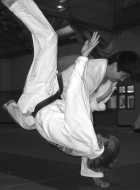| Jaime Montemayor |
| Portfolio || Honors || Journeys || Research || Games || Robots |
I am now at The Johns Hopkins University Applied Physics Laboratory.
Senior Research Scientist
Research and Technology Development Center
The Johns Hopkins University Applied Physics Laboratory
11100 Johns Hopkins Road, #2-244
Laurel, MD 20723-6099
jaime dot montemayor at jhuapl dot edu
443.778.4497
| Curriculum vitae |
| Publications |
| Videos |
| Robots |

R. W. Hart Prize, The Johns Hopkins University Applied Physics Laboratory, 2003.
CHI 2001 Doctoral Consortium.
Finalist, 2000 Invention of the Year, for A Storytelling Robot for Pediatric Rehabilitation, University of Maryland Office of Technology Commercialization Research and Graduate Studies.
University of Maryland Graduate School Fellow, 1997 to 1999.
American Society of Civil Engineers Concrete Cube Contest, 1986, 2nd Place.
Ate everything on my plate, 1968.

| 2005-now | The Johns Hopkins University Engineering Program for Professionals, Adjunct Faculty. |
| 2003-now | The Johns Hopkins University Applied Physics Laboratory, Senior Research Scientist. |
| 2004 | Fellow, International Smelly Feet Society. |
| 2003 | PhD, Computer Science, Maryland. Advisors: Allison Druin and Jim Hendler. |
| 1997-9 | MS, Computer Science, Maryland. Graduate School Fellow. |
| 2000-now | Judo, College Park Judo Club. Instructor. |
| 1990-7 | Judo, Oishi Judo Club |
| 1995-6 | Lots of Classes, Computer Science, CUNY Queens College. |
| 1992 | Diploma, Classic Culinary Arts, French Culinary Institute. |
| 1982-1986 | BS, Civil Engineering, Berkeley. |
| 1978-1982 | Inglewood High School |
| 1976-1978 | Crozier Junior High School |
| 1970-1976 | Guangren Catholic Elementary School & Kindergarten |

While I was at the University of Maryland, I munched on free food at the Human-Computer Interaction Lab. I also hung around the Parallel Understanding Lab (Artificial Intelligence) and the Autonomous Mobile Robotics Lab (Robotics).
I am interested in four broad topics in computer science: human computer interaction (HCI), tangible and ubiquitous computing systems, visual programming languages, and robotics. At Maryland, I devoted my efforts to design. I spent countless hours thinking about ways for children to interact with emerging technologies in robotics and tangible computing applications.
An eye-opening experience early in my academic career led me to appreciate the special HCI issues related to children. In 1998, I created a behavior-based robot for the children in Allison Druin's nascent children-adult design group. When I proudly show it to them, total and utter silence.
Hmmmm. What's up with that? What happened? I knew then that somehow, somewhere, I was missing the boat. It did not take long for me to figure out that in addition to being a technology geek, I would need to study Design. And if I want to invent cool stuff for children, I better start working on design processes that help me understand all that which make children so special. I joined Allison Druin's design team of adults and children, and I studied the cooperative inquiry methodology that she and her team pioneered. In addition to refining this design approach, I also helped to adapt it for children of different age brackets. This web page tells you more about our intergenerational team and the cooperative inquiry design process. This CHI-1999 video (small, large) describes the methodology. This video, by Larry Clamage, for Voice of America, shows us working on the International Children's Digital Library and also on the StoryRoom. Our work has been well received in the popular press (for example, a Baltimore Sun article, and a Discover magazine article).
Over the the course of five years, my team and I worked with children from two age groups: 7-11 year old elementary school students and kindergarten students. Because our young designers showed great interest in storytelling, we developed some really cool technologies to support novel storytelling experiences, including an emotional storytelling robot and a physical interactive storytelling environment.
The PETS robot (Personal Electronic Teller of Stories) is a constructive storyteller. A child builds a furry animal by attaching facial parts, limbs, etc. onto a soft body. She can define "emotional" movements. She can also write stories that contain words such as HAPPY, SAD, LONELY. When PETS retells the story (using text-to-speech), it performs the movements attached to to the "emotional" keywords. This video (small, large) shows you how we used cooperative inquiry to design PETS-1. Here is a video (small, large) on the design of PETS-2. Here is a video (small, large) about Jesterbot, (PETS-3) a robot for therapeutic play.
My most recent work on storytelling is the StoryRoom. Conceptually, a StoryRoom is a physical interactive environment that expresses a story. Children construct StoryRooms (in much the same as they create stories in other media) with tools and supplies found in a StoryKit. This kit contains construction material, story starters, physical icons and tools, and programming technology. This video (small , large) describes our StoryKit concept. These papers (DIS2000, CHI2002) complement the videos. This video (small, large) describes the StoryRoom concept. We have contructed other StoryRooms. Here is a video (small, large) on Goldilocks and the Three Bears (summer 2002).
The programming component of the StoryKit is called Physical Programming. Physical Programming is a way for children to create interaction rules without the apparent use of any traditional computational devices, such as mouse, screen, or keyboard. Unlike the work described in earlier papers and videos, there are no longer any computer-like elements in the StoryKit. Here is a video ( small, large) that describes an example Physical Programming syntax.

| Magic Pong |
Walking robot
Another great walking robot built by a 6th grade student
A catalog of walkers
Handy Boards and goodies
Books
BASIC Stamp Supplier
